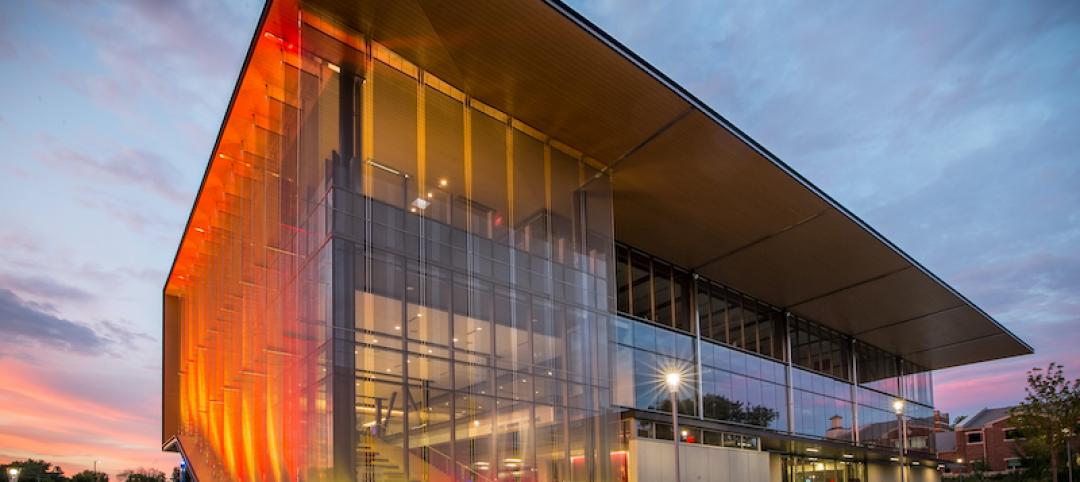Representatives from the architectural regulatory authorities of United States, Canada, and Mexico have announced a major agreement to mutually recognize architect credentials in the three countries, making it possible for architects to work across North American borders.
The National Council of Architectural Registration Boards (NCARB) in the United States, in conjunction with the Canadian Architectural Licensing Authorities (CALA) and the Federacion de Colegios de Arquitectos de la Republica Mexicana (FCARM), announced the final implementation of the Tri-National Mutual Recognition Agreement for the International Practice of Architecture among the United States, Canada, and Mexico.
The agreement represents over a decade of negotiations, bringing cross-border recognition of professional credentials from concept to reality in the spirit of the North American Free Trade Agreement (NAFTA). Qualified architects, from each country, who satisfy the requirements of the agreement, will be granted a credential that will lead to a license to practice architecture in the host country.
Informally known as the Tri-National Agreement, the pact outlines specific requirements that architects must satisfy when pursuing mutual recognition. These include education and work qualifications, as well as submitting documentation to confirm the individual’s credentials. A few of the basic eligibility requirements include:
• Completion of a professional degree in architecture from a program accredited by the National Architectural Accrediting Board (NAAB), the Canadian Architectural Certification Board (CACB/CCCA), Acreditadora Nacional de Programas de Arquitectura y Disciplinas del Espacio Habitable (ANPADEH), or recognized equivalent.
• A minimum of 10 years of post-licensure experience in the architect’s home jurisdiction.
• Proof of “Good Standing” in the home jurisdiction, as verified by the local regulatory authority.
• Knowledge of the codes, laws, and other matters applicable to the practice of architecture in the host country.
• Submission of a dossier of work to satisfy the specific competencies outlined in the agreement related to “responsible control and comprehensive practice.”
• Completion of an interview before a review panel in the host country, conducted in the language of the host country.
The agreement, along with similar programs, opens doors to qualified architects as the world and architectural practices become more globally connected. Architects interested in pursuing the opportunity for licensure outside of their home country should review the eligibility requirements and program information in greater detail as posted on the NCARB website. Additional details and standard application forms can be obtained by contacting the regulatory authority in the architect’s home country.
The path to the Tri-National Agreement has its origins in the passage of NAFTA in 1994, which spurred a discussion between leaders and regulators of the architecture profession in the United State, Canada, and Mexico to consider ways to facilitate the mutual recognition of licensure credentials among all three countries.
The initial agreement, signed in 2005 by the leaders of the profession in all three countries, marked what many considered to be one of the first professional services recognition programs under NAFTA. The study of the path to licensure in each country, the subsequent negotiations, the pilot program, and the final mechanisms for implementation continued over the following years, with support from volunteer leaders and staff from all three countries’ licensing authorities.
Throughout the process, the underlying goal has been to remove barriers and provide qualified architects the opportunity to offer professional services across borders while ensuring the protection of the public health, safety, and welfare. The agreement applies to architects from the United States, Canada, or Mexico who have not used other mutual recognition agreements for initial licensure in their home country.
Related Stories
Architects | Sep 30, 2021
Riding the great AEC resignation wave
More people than ever are reconsidering what work and career mean. What can AEC firms do to recruit and retain workers in this changing workplace environment? Karl Feldman, Partner with Hinge Marketing, discusses ideas and strategies with BD+C's John Caulfield in this exclusive interview for HorizonTV.
Glass and Glazing | Sep 30, 2021
Plans move forward on Central Place Sydney, duel towers with an AI-driven façade system
SOM and Fender Katsalidis are designing the project.
Architects | Sep 28, 2021
Hoffmann Architects Welcomes Travis Heim as Senior Staff Architect
Hoffmann Architects, an architecture and engineering firm specializing in the rehabilitation of building exteriors, announces that Travis Heim has joined the New York office as Senior Staff Architect.
AEC Business Innovation | Sep 28, 2021
Getting diversity, equity, and inclusion going in AEC firms
As a professional services organization built on attracting the best and brightest talent, VIATechnik relies on finding new ways to do just that. Here are some tips that we’ve learned through our diversity, equity, and inclusion (DE&I) journey.
Multifamily Housing | Sep 22, 2021
Designing for the ‘missing middle’ in multifamily housing
Multifamily housing expert Patrick Winters, AIA, discusses a neglected segment of the market: the "missing middle."
Multifamily Housing | Sep 22, 2021
11 notable multifamily projects to debut in 2021
A residence for older LGBTQ+ persons, a P3 student housing building, and a converted masonic lodge highlight the multifamily developments to debut this year.
Data Centers | Sep 22, 2021
Wasted energy from data centers could power nearby buildings
A Canadian architecture firm comes up with a concept for a community that’s part of a direct-current microgrid.
Hotel Facilities | Sep 22, 2021
Will hotel developers finally embrace modular construction?
Last May, MiTek, a construction software and building services company that’s part of Warren Buffett’s Berkshire Hathaway conglomerate, formed a partnership with Danny Forster & Architecture to promote modular design and construction.
Arenas | Sep 20, 2021
LA Clippers unveil $1.8 billion Intuit Dome
AECOM is the lead designer for the project.
University Buildings | Sep 7, 2021
Gateway to the West: Kansas City University Center for Medical Education Innovation
Kansas City University Center for Medical Education Innovation uses GKD Omega 1520 metal fabric.

















